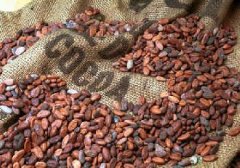Coffee berry picking-berry treatment-drying
Coffee trees produce berries, called coffee berries, whose bright red color means they are ripe and ready to be picked. The fruit clustered on the branches. The outer skin (exocarp) of coffee berries is thick and bitter. However, the fruit (mesocarp) inside is very sweet and has the texture of grapes. Then there is parenchyma, a sticky film like honey that protects coffee beans. The coffee beans themselves are also covered with a parchment-like coating called endocarp. It protects two turquoise coffee beans, of course, with a thin film called seed coat or silver coat.

Coffee is usually harvested once a year. The harvest time depends on the geographical location, but usually the northern hemisphere harvests from September to March, while the southern hemisphere harvests from April to May. Coffee is usually picked by hand and can be picked off all the berries from the branches at once or selectively. The latter method is expensive and only suitable for picking Arabica coffee beans.

The next step after picking is to deal with it. There are two ways to handle it:
Sun drying-the simplest and most economical way, the coffee berries picked are placed directly in the sun and spread out to dry. Then turn it continuously with a rake and let it dry for 7 to 10 days until the moisture content is reduced to 11%. The outer skin of the coffee berry will turn yellow and the coffee beans inside will shake.

Water-wet-the main difference between sun-drying and water-wet is that the pulp of coffee berries must be removed from coffee beans within 24 hours of picking. The skin and pulp can be washed off with a pulp washer. The coffee beans are then placed in the fermentation box for 12 to 48 hours. The natural enzyme removes the sticky material from the parchment wrap. Then, the coffee beans are either dried in the sun or dried by a machine.


After the coffee beans are dried, all the coating is peeled off from the coffee beans (a process called peeling). Occasionally, a machine specially designed to peel off the remaining silver skin is used. Then, according to the size and specific gravity, the coffee beans are classified and classified. Coffee beans are either sorted by hand on the conveyor belt, or the light (defective) and heavy ones are separated by a blower.
The coffee shipped is unroasted. It's called green coffee. It is generally stored in jute or Bohr sacks or shipped in large plastic freight containers. As many as 7 million tons of green coffee are shipped around the world every year.
Important Notice :
前街咖啡 FrontStreet Coffee has moved to new addredd:
FrontStreet Coffee Address: 315,Donghua East Road,GuangZhou
Tel:020 38364473
- Prev

The processing method of fresh coffee beans-- drying method
Two methods in the processing of fresh coffee beans: wet treatment & drying
- Next

The processing of coffee beans
There are two ways to prepare coffee beans for the baking process. The method chosen has a significant impact on the final price and quality of coffee. The cheapest method of processing is called "drying", which is used for lower-grade coffee beans, while higher-quality coffee beans are processed by "wet treatment".
Related
- Guji coffee producing area of Guji, Ethiopia: Humbela, Shakiso, Wulaga
- What is the most expensive variety of Qiloso in BOP multi-variety group?
- How to store the coffee beans bought home?
- Why are Yemeni coffee beans so rare now?
- Ethiopian Sidamo all Red Fruit Sun Sun Santa Vini Coffee beans
- SOE is mostly sour? What does it mean? Is it a single bean? what's the difference between it and Italian blending?
- Is Italian coffee beans suitable for making hand-brewed coffee?
- How to choose coffee beans when making cold coffee? What kind of coffee beans are suitable for making cold coffee?
- Just entered the pit to make coffee, what kind of coffee beans should be chosen?
- Can only Japan buy real Blue Mountain Coffee? What are authentic Jamaican Blue Mountain coffee beans?

